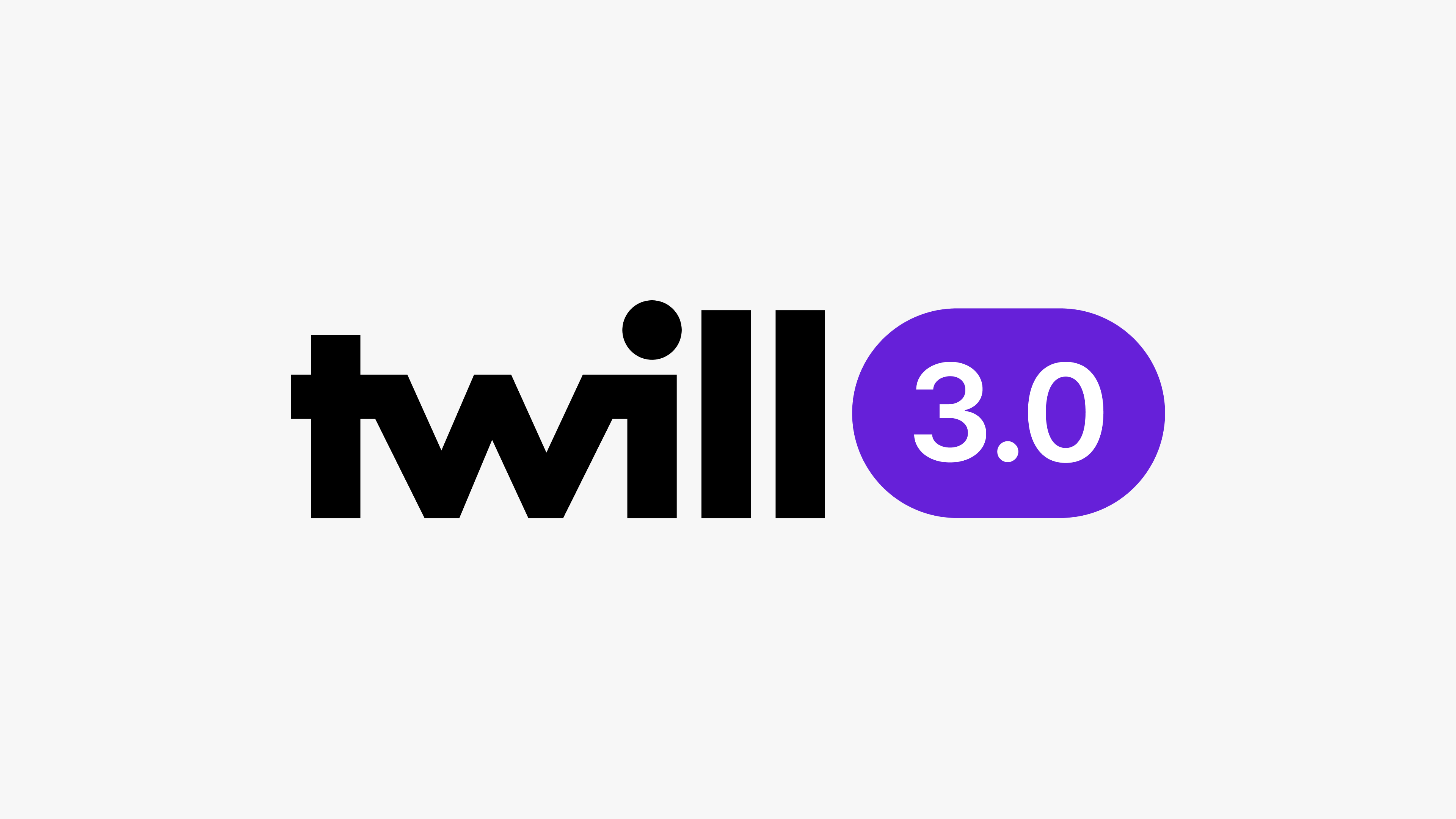Twill 3.0
The priorities for Twill 3.0 were clear. As Twill is a developer focused CMS framework, we wanted to create an even better developer experience and improve our documentation.
After 3 alpha releases, 2 beta releases and 4 release candidates, we're proud to share that Twill 3.0 is now stable. Thanks to all community members that helped us refine it and major kudos to Rob Harings for the herculean effort over the past year!

In this article, we will delve into the extensive updates in Twill 3.0, providing an overview of each new feature along with a short explanation to help you better understand the latest release.
New fluent OOP form builder, table builder, and navigation builder
Twill 3.0 introduces new object-oriented programming (OOP) builders for forms, tables, and navigation, offering a more intuitive and flexible way to create and manage these elements.
Installable examples
Twill 3.0 offers installable examples, such as a simple page builder, to help users get started quickly.
Packages
Twill 3.0 introduces installable turnkey packages that can include third-party integrations, content types, blocks, frontend components, templates, and even custom Vue components to customize Twill itself.
Twill API and Twill API client
Twill 3.0 improves support for headless approaches using the Twill API and Twill API client, allowing developers to build decoupled frontends with ease.
New advanced CMS-driven permissions system
Twill 3.0 features a new, more advanced permissions system that allows for granular control over user access and actions.
New settings forms supporting all form fields
Twill 3.0 introduces new settings forms that support all form fields, making it easier to configure the CMS to your specific needs.
New class-based components blocks
Twill 3.0 introduces new class-based components blocks for improved organization.
Nested block editor field support
Twill 3.0 introduces support for nested block editor fields, offering greater flexibility and organization when building content structures.
Refreshed WYSIWYG with Tiptap by default
Twill 3.0 updates the WYSIWYG editor and now uses Tiptap by default, offering a more modern and user-friendly editing experience. This update also introduces a custom link feature that uses the Twill modal UI and browser integration for a more seamless linking process in the WYSIWYG editor.
New relations types supported by browsers and repeaters fields
Twill 3.0 expands the types of relationships supported by browser and repeater fields, providing greater flexibility when building content structures.
Simplified and documented methods to customize module behavior
Twill 3.0 offers easier and better-documented ways to customize the behavior of modules, allowing developers to tailor Twill to their specific needs.
Draft revisions on top of published content
Twill 3.0 allows for draft revisions to be created and managed on top of published content, providing a more streamlined editing and publishing process.
User timezone-aware datetime pickers
Twill 3.0 ensures that datetime pickers are aware of the user's timezone, providing a more accurate and user-friendly experience.
New input masking capability
Twill 3.0 adds input masking capabilities, allowing users to define specific input formats for form fields.
Improved preview by allowing interactivity
Twill 3.0 enhances the preview functionality by enabling interactivity, offering a more accurate representation of the final output.
Automated test helpers
Twill 3.0 includes automated test helpers to streamline the testing process and ensure a more stable and reliable CMS.
Ability to limit revisions number
Twill 3.0 introduces the option to limit the number of revisions stored, helping to manage storage and performance.
Ability to reset 2FA for other users (superadmin)
Twill 3.0 allows superadmins to reset two-factor authentication (2FA) for other users, providing better account management and security.
Ability to disable options in select fields
Twill 3.0 offers the option to disable specific choices in select fields, giving developers more control over form inputs.
Optionally generated preview/frontend view files (non-headless setup)
Twill 3.0 provides the option to generate preview and frontend view files for non-headless setups, enhancing the versatility of the CMS.
Semi-automated and documented upgrade path based on Rector
Twill 3.0 offers a seamless upgrade process from Twill 2, using Rector to automate many steps and providing detailed documentation for smoother transitions.
PHP 8+ only
Twill 3.0 fully embraces PHP 8, bringing performance improvements, enhanced security, up-to-date language features, and improved typing.
Massive test coverage bump
Twill 3.0 significantly increases its test coverage, now including end-to-end testing of the user experience using Laravel Dusk.
Improved defaults
Twill 3.0 media library works on first install without third-party dependencies like Amazon S3 or Imgix, thanks to Glide. It also improves default configurations based on usage learnings.
Namespace changes
Twill 3.0 introduces the "Twill" namespace instead of "Admin" for better clarity and organization.
Refreshed documentation with Torchlight code highlighting
Twill 3.0 features updated documentation that includes Torchlight code highlighting for better readability and understanding.
Separated guides section in the documentation
Twill 3.0 offers a separated guides section in the documentation and includes a new tutorial for onboarding with a straightforward, comprehensive example.
Conclusion
Twill CMS 3.0 brings a wealth of updates and enhancements, making it an even more powerful and flexible content management system. From performance improvements and expanded feature sets to better customization options and third-party integrations, this latest release enables developers and users to build and maintain web applications more efficiently and intuitively.